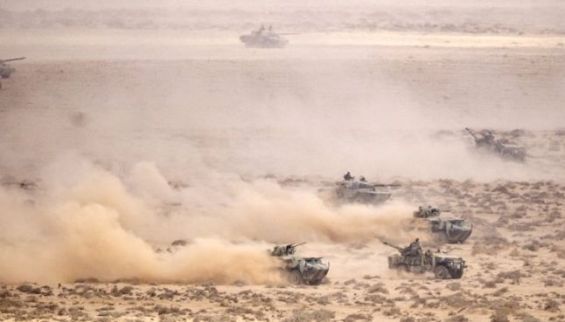The Stockholm International Peace Research Institute (SIPRI) reported that Morocco's arms imports declined by about 46 percent, dropping from 1.4 percent of the world's total during 2014-2018 to 0.8 percent between 2019 and 2023.
The institute, in its report published on Monday, March 11, listed the United States (69 percent), France (14 percent), and Israel (11 percent) as the top arms suppliers to Morocco. Morocco ranked 29th on the global arms importer list.
Algeria, on the other hand, ranked 21st, with 1.1 percent of global arms imports. This figure is significantly lower compared to 4.8 percent during 2014-2018. Russia remained the primary arms supplier to Algeria (48 percent), followed by Germany (14 percent) and China (14 percent).
Low purchases by Africa's biggest importers
The report attributed the decline in arms imports for African countries, down 52 percent from 2014-2018 to 2019-2023, mainly to decreased purchases by the region's biggest importers, Algeria (-77 percent) and Morocco (-46 percent).
Despite the recent decline, arms imports to Morocco and Algeria are expected to rise in 2024. Algeria allocated $21.6 billion to its military, compared to $12 billion in 2023. Likewise, Morocco's 2024 budget designated $12.47 billion to the army, up from $12 billion in 2023.
Russia (24 percent), the United States (16 percent), China (13 percent), and France (10 percent) were the primary arms suppliers to African nations between 2019-2023.
Countries in Asia and Oceania accounted for 37 percent of global arms imports during 2019-2023, followed by the Middle East (30 percent), Europe (21 percent), the Americas (5.7 percent), and Africa (4.3 percent).
The report highlighted a surge in European arms purchases following the Russia-Ukraine war. The United States supplied about 55 percent of European arms imports between 2019-2023.
Global arms exports from the United States increased by 17 percent from 2014-2018 to 2019-2023, while Russian exports dropped by half. Russia slipped to third place, just behind France, as the world's largest arms exporter.
The largest share of global arms sales goes to Asia, where India remains the top importer. India's arms imports increased by 4.7 percent from 2014-2018 to 2019-2023. Saudi Arabia ranks as the second-largest arms buyer globally, followed by Qatar, Ukraine, Pakistan, Japan, and Egypt.





 chargement...
chargement...












